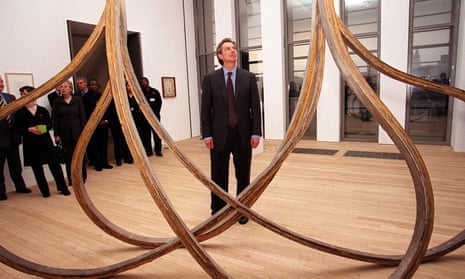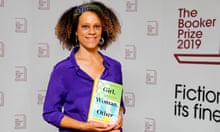In February 1999, the Macpherson report into the death of Stephen Lawrence made 70 recommendations for eradicating institutional racism within the police. Although the arts, culture and media sectors were not a target of the report, we can similarly trace the uptake of what would later become known as cultural diversity within these institutions – particularly at a time when the political context was invested, at least rhetorically, in eradicating racial prejudice.
This week, 20 years on from the report, Arts Council England published its annual report on diversity within the arts sector, showing that in some areas arts organisations are “treading water”.
The cultural and creative sector, rebranded as an “industry” by New Labour and laden with National Lottery funding, became a key site for the government’s ambitions to marry the monetisation of the creative industry with a social inclusion agenda. The vision was of arts and culture having a therapeutic effect on marginalised communities.
Diversity as a term had little pedigree in the popular imagination prior to New Labour, but in the years following Tony Blair’s election in 1997, there was a flurry of diversity schemes within publicly funded cultural institutions: the UK Film Council was established in 2000, with diversity being one of its 13 key objectives; the BBC appointed its first diversity officer after director general Greg Dyke’s “hideously white” confession in 2001; Arts Council England decreed that arts organisations would require a diversity strategy as a condition of funding; and the Cultural Diversity Network was created in 2000 to support diversity initiatives within the TV sector.
Further, the BBC’s Asian Network and 1xtra continued to provide a platform for emerging broadcasters of colour to establish careers in the sector (albeit away from the mainstream) and Channel 4 would close down its multicultural department in 2001 under the belief that ethnic minorities had now been assimilated into mainstream society.
All of this seemed to offer hope that the battle for racial equality had finally hit its stride. Then something went wrong. A combination of industries placing economic interests over social interests, resistance and disinterest from stakeholders, and poorly conceptualised initiatives left diversity in the wilderness. From Channel 4 Film’s 2000 initiative Spirit Dance, which claimed it would “bring more black and Asian film talent to the cinema screen”, to Arts Council England’s 2011 What Is the Creative Case for Diversity? report, the sector became littered with the corpses of failed diversity schemes.
In the film industry in particular (where black and minority ethnic workers represent just 4.4% of the sector’s workforce), what is particularly revealing is the seeming lack of motivation to challenge the status quo. Prejudice, casualisation of labour, stigma and overt discrimination still seem prevalent.
The expanding vocabulary of the diversity agenda in the creative industries, from its advent in 2000, is telling. Notions of diversity have shifted from a focus on racial discrimination to one that advances the “business case for diversity” – seeing economic growth as the primary justification for policy action, rather than equality.
While certainly not alone, the BFI’s dominant narrative of “diversity makes good business sense” and the tax credit agenda for diversity forwarded by the Film Diversity Action Group suggests an industry that has given up on the idea that social equality should be the conceptual base for any action on diversity.
Further, depoliticised terms such as “underrepresentation”, “non-traditional” and “hard to reach” groups do not correspond to the real experiences of ethnic minorities in the sector. The film director Kolton Lee’s recent evisceration of the overt discrimination he endured within the film industry’s development process is testament to the yawning gap between language and reality. For Lee, having experienced 20 years of the BBC, Channel 4, the UK Film Council and the BFI rejecting his screenplays, the repeated response of “underdeveloped script” is simply a polite euphemism for a disinterest in stories about black lives and perspectives from a white film industry.
What we have is a diversity strategy that operates with a twofold approach. First, it employs strategic language to conceal the pathological inequality and exclusionary labour processes at the sector’s heart. Second, through narratives like “diversity is good for business”, all political meaning is extracted from diversity, while redirecting the burden of change on to ethnic minorities themselves.
A political agenda for diversity must identify the issue as one of individuals being systematically excluded because of their race. This would render diversity as a question of social justice as opposed to an issue of simply “including” people of colour into a particular creative sector.
This is not to suggest that there have not been areas of progress. Arts Council England’s recent report suggests a small but welcome 2% increase in the BAME workforce over the last two years – and the BFI’s recent publicising of their diversity workforce data points to a realisation of the need for transparency and accountability.
However, current diversity initiatives within the cultural and creative industries continue to approach the issue of ethnic minority equality through a culture of schemes – and the hyper-celebration of the latest initiative. This points to a diversity agenda performing as a marketing strategy rather than a method of structural transformation. Further, it resists a collective discussion on what diversity as a concept actually means – and if current approaches are still useful for responding to manifold inequalities.
Diversity policy has always seemed to be driven by semi-coercion rather than social commitment. When we have cultural institutions that are situated in areas of the country that are melting pots for different identities, the only attitude there should be is to employ and represent people of all races for social justice purposes. Twenty years on from the Macpherson report and the beginning of diversity, it appears that we still need reminding of this.










